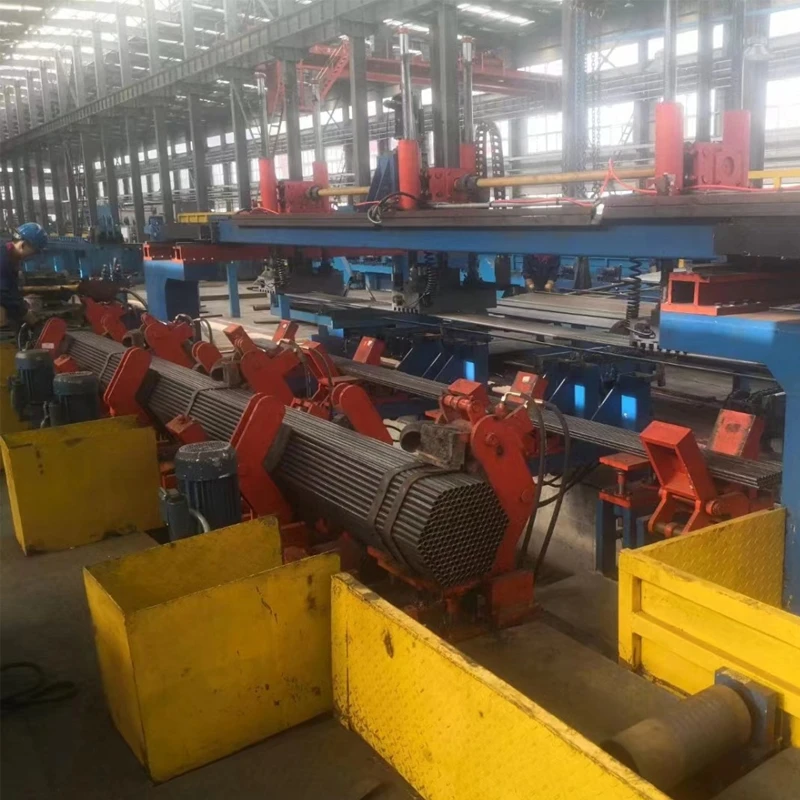channel roller manufacturing equipment for efficient material handling and processing
Understanding Channel Rolling Machines Key Aspects and Applications
Channel rolling machines are indispensable tools in metalworking, specifically designed to shape and process steel and other metals into channel profiles. These machines offer precision, efficiency, and versatility, making them vital in various industries such as construction, automotive, and manufacturing. This article explores the mechanics, applications, and advantages of channel rolling machines, providing insight into their critical role in modern metal fabrication.
The Mechanics of Channel Rolling Machines
Channel rolling machines utilize a series of rollers to transform flat metal sheets into specific channel shapes. The process typically involves three main rollers positioned in a triangular arrangement. The metal is fed through the rollers, which apply pressure to bend and shape it into the desired profile.
The key to the efficiency of channel rolling machines lies in their ability to precisely control the gap between the rollers. Adjustable roller settings allow operators to accommodate different thicknesses and types of metal, ensuring that the final product meets exact specifications. Modern machines are often equipped with digital controls, enhancing accuracy and repeatability.
Additionally, advanced channel rolling machines may feature programmable settings that enable operators to store various profiles for quick access. This functionality streamlines production, particularly in environments where multiple channel shapes must be produced in a single run.
Applications of Channel Rolling Machines
Channel rolling machines find applications across a wide range of industries. In construction, they are integral to creating structural components such as beams and supports. Steel channels are widely used in building frames due to their strength and durability, making channel rolling machines essential in the construction of bridges, skyscrapers, and industrial facilities.
In the automotive industry, channel rolling machines play a crucial role in producing components for vehicle frames, brackets, and body structures. The ability to produce lightweight yet strong metal channels contributes to improved fuel efficiency and performance in modern vehicles.
channel rolling machine

Moreover, manufacturers in various sectors use channel rolling machines to create parts for machinery, appliances, and furniture. The versatility of these machines enables the production of customized parts, meeting the diverse needs of different industries.
Advantages of Using Channel Rolling Machines
One of the most significant advantages of channel rolling machines is their efficiency. By automating the channel formation process, these machines significantly reduce the time and labor required compared to manual methods. This increased productivity is crucial in keeping up with market demands and maintaining competitive pricing.
Moreover, channel rolling machines enhance precision and reduce material waste. The ability to finely adjust roller settings ensures that the channel profiles produced are accurate and consistent. This precision minimizes the need for rework or scrap material, leading to cost savings over time.
The versatility of channel rolling machines also cannot be overstated. These machines can produce a wide array of channel shapes and sizes, allowing manufacturers to adapt quickly to changing market trends or customer specifications. This flexibility is essential in today’s fast-paced manufacturing environment.
Conclusion
Channel rolling machines are key components in the metalworking industry, offering a range of benefits from efficiency to precision and versatility. Their ability to transform flat metal sheets into structural channel profiles has made them invaluable in construction, automotive, and manufacturing applications.
As technology continues to evolve, we can expect further advancements in channel rolling machines, such as enhanced automation and smarter controls, further streamlining the production process. Understanding the mechanics, applications, and advantages of these machines is crucial for anyone in the industry, as they play a pivotal role in shaping the world around us. Whether in the towering steel frameworks of skyscrapers or the robust structures of vehicles, the influence of channel rolling machines is undeniable and will continue to grow in significance.
-
High Frequency Straight Seam Welded Pipe Production Line|BzZhou Xinghua|Precision Welding&EfficiencyNewsJul.30,2025
-
High Frequency Straight Seam Welded Pipe Production Line - BzZhou Xinghua|Precision Engineering&EfficiencyNewsJul.30,2025
-
High-Frequency Straight Seam Welded Pipe Production Line-BzZhou Xinghua Machinery Equipment Manufacturing Co., LTD.NewsJul.30,2025
-
High-Frequency Straight Seam Welded Pipe Production Line-BzZhou Xinghua Machinery Equipment Manufacturing Co., LTD.|Precision Manufacturing, High EfficiencyNewsJul.30,2025
-
High Frequency Straight Seam Welded Pipe Production Line-BzZhou Xinghua Machinery Equipment Manufacturing Co., LTD.|Precision Steel Pipe Manufacturing&Industrial EfficiencyNewsJul.29,2025
-
High-Frequency Straight Seam Welded Pipe Production Line-BzZhou Xinghua Machinery Equipment Manufacturing Co., LTD.|Precision Steel Pipe Manufacturing&Industrial EfficiencyNewsJul.29,2025


